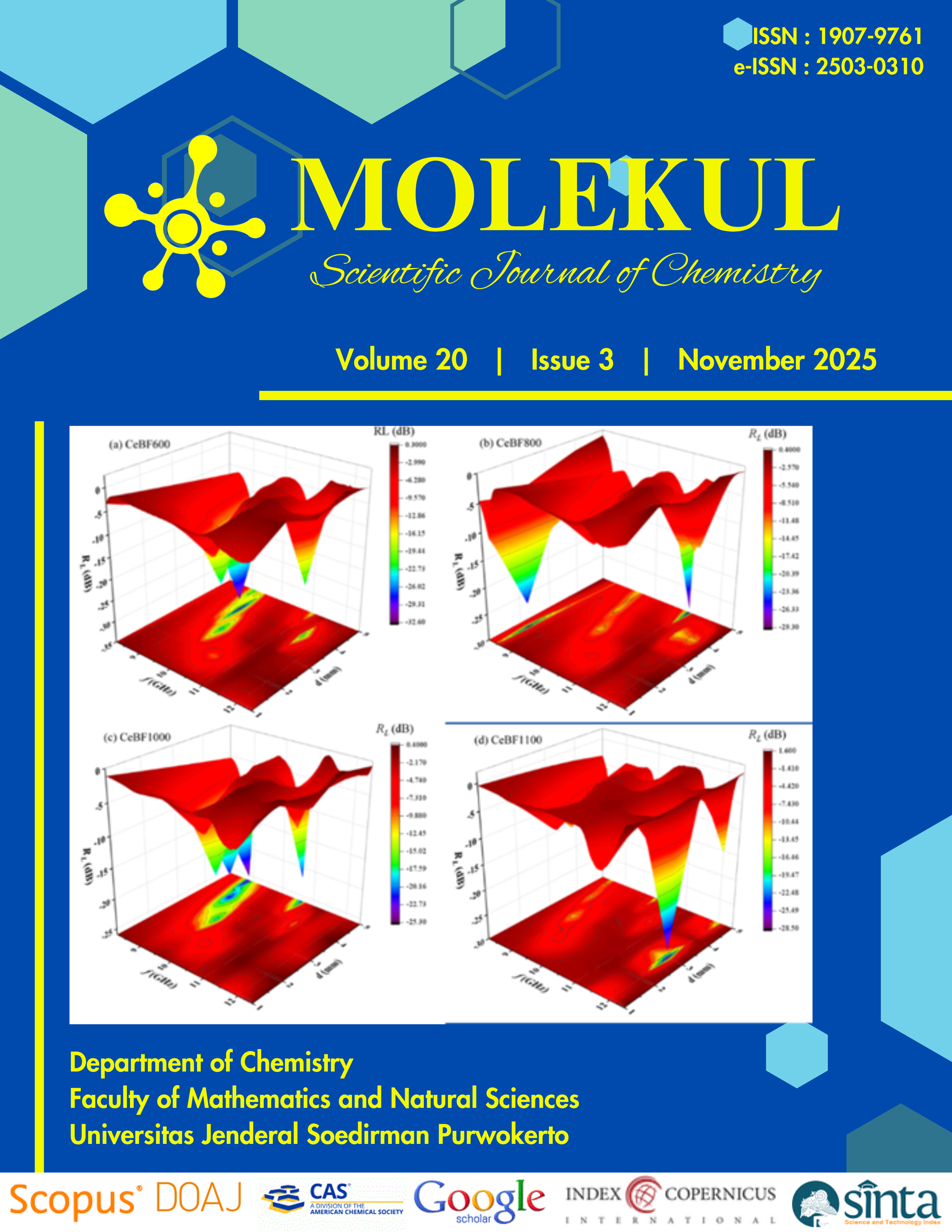Solvent-Free Microwave Extraction: Phytochemistry and Bioactivities of Essential Oil from Stachytarpheta jamaicensis, L. in Banyuwangi
Abstract
ABSTRACT. Stachytarpheta jamaicensis, L. is a member of the Verbenaceae family. It is a medicinal plant easily found on vacant land and in rice fields in Banyuwangi. The present study is the first detail reported to examine the phytochemical compound and bioactivities of essential oil from S. jamaicensis L., using solvent-free microwave extraction (SFME). Forty chemical compounds were identified in the inflorescence and thirty in the leaves. β-caryophyllene, fulvoipolamiide, hexahydrofarnesyl acetone, t-phytol, neophytadiene, and squalene were identified in inflorescence oil. In contrast to the inflorescence, where these compounds were present in minor amounts, fulvoipolamiide, t-phytol, and squalene were the predominant components in the leaf oil. The IC50 values of leaves and inflorescence essential oils were 30.566 mg/mL and 52.510 mg/mL, respectively. Based on IC50 values, leaf essential oils have stronger antioxidant potential than inflorescence. Antibacterial and antifungal tests indicated that the leaf essential oil possesses greater antimicrobial efficacy than that of the inflorescence. These findings suggest that the essential oil of S. jamaicensis is a promising source of antioxidant, antibacterial, and antifungal agents, and holds potential for future pharmaceutical applications.
Keywords: antibacterial; antifungal; antioxidant; medicinal plant
Authors agree with the statements below:
- Authors automatically transfer the copyright to the MOLEKUL journal and grant the journal right of first publication with the work simultaneously licensed under a Creative Commons Attribution 4.0 International License (CC BY 4.0).
- Authors are able to enter into separate permission for the non-exclusive distribution of the journal's published version of the work (e.g., post it to an institutional repository or publish it in a book), with an acknowledgment of its initial publication in this journal.













